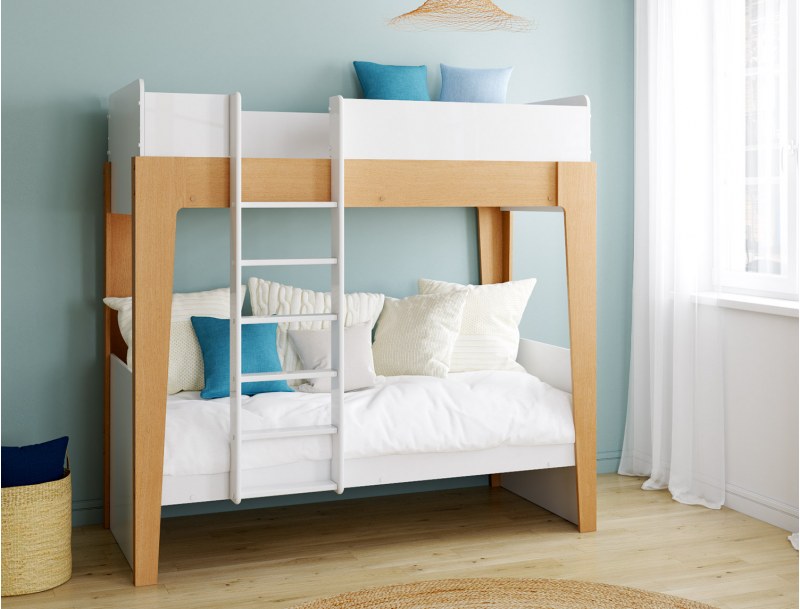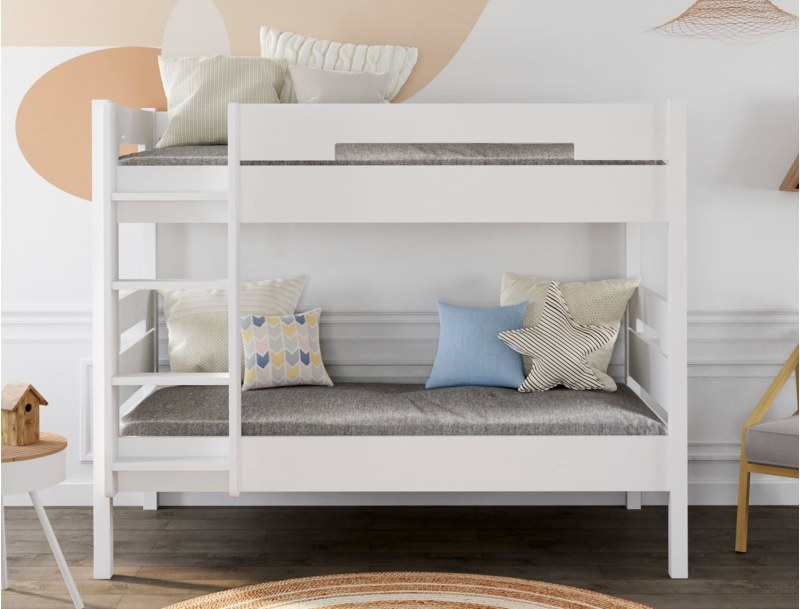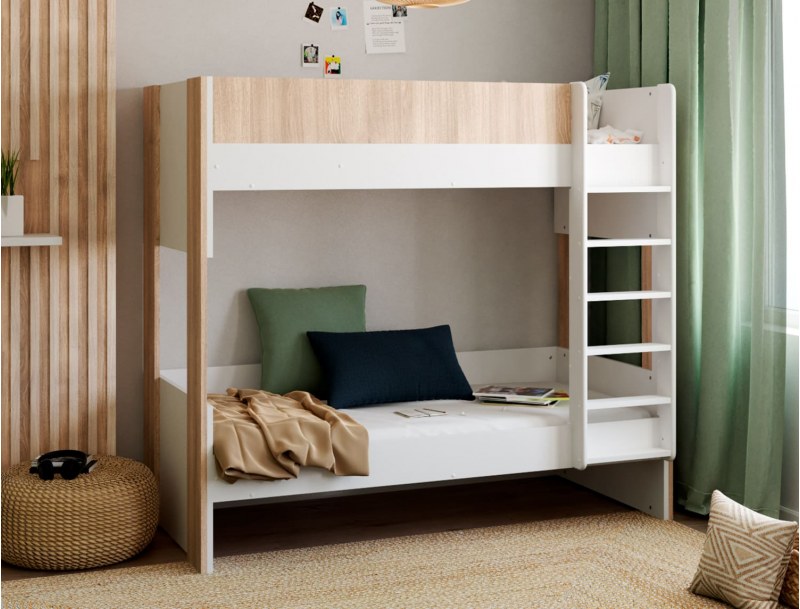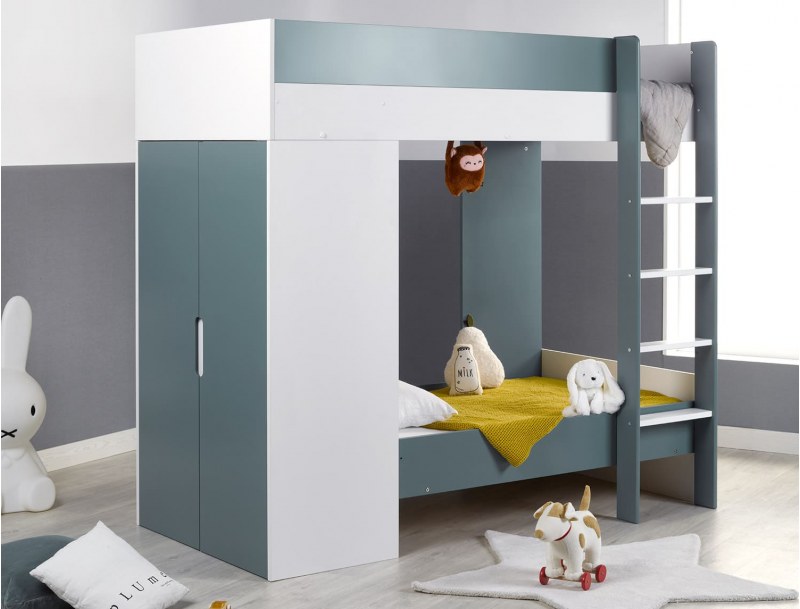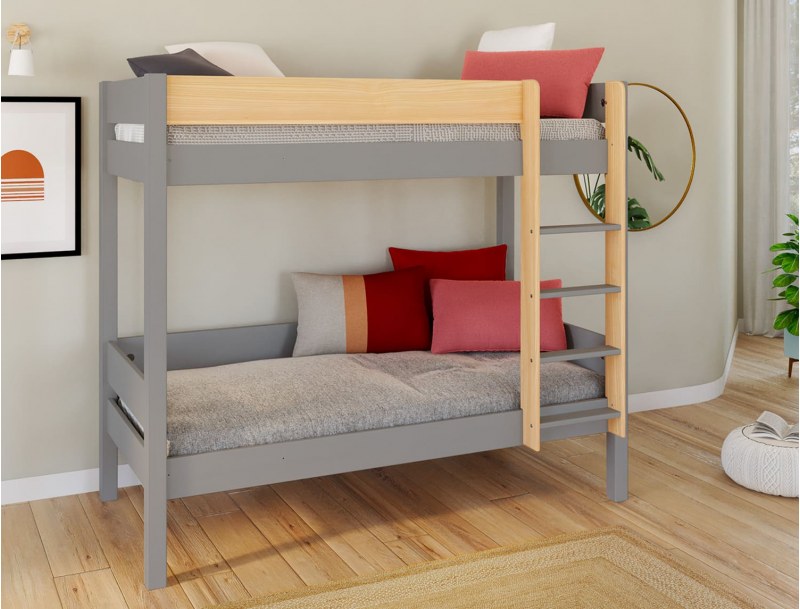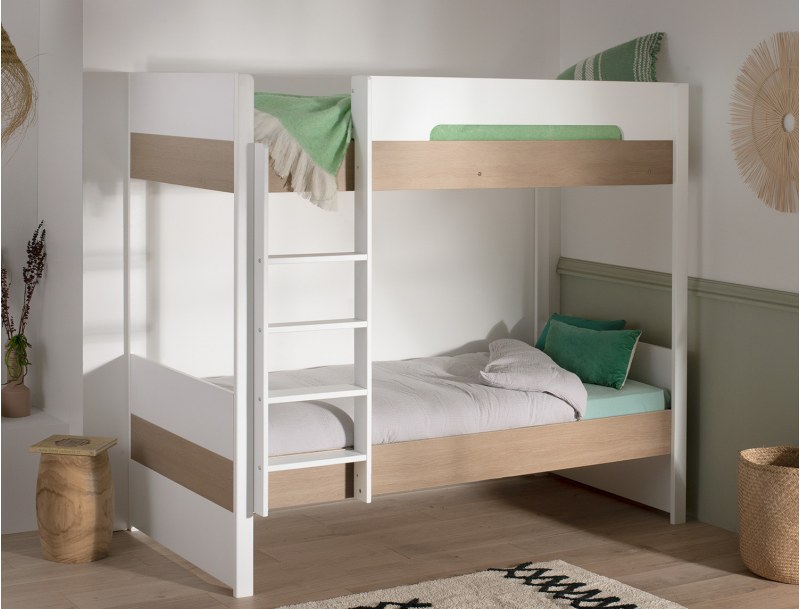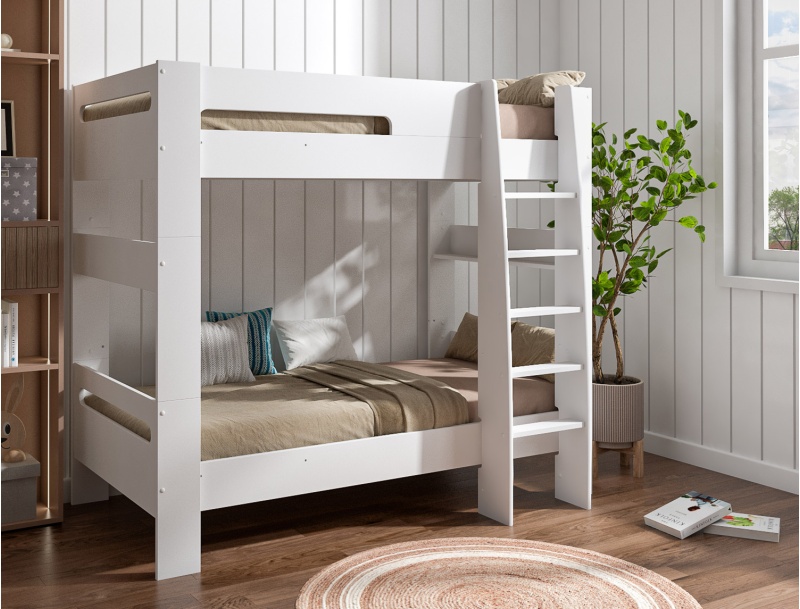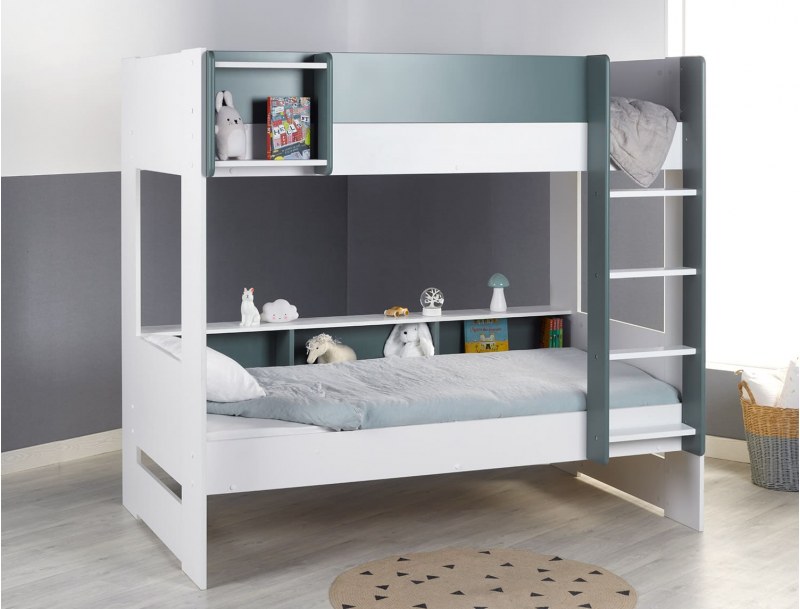Bunk bed: 5 advantages for a shared room
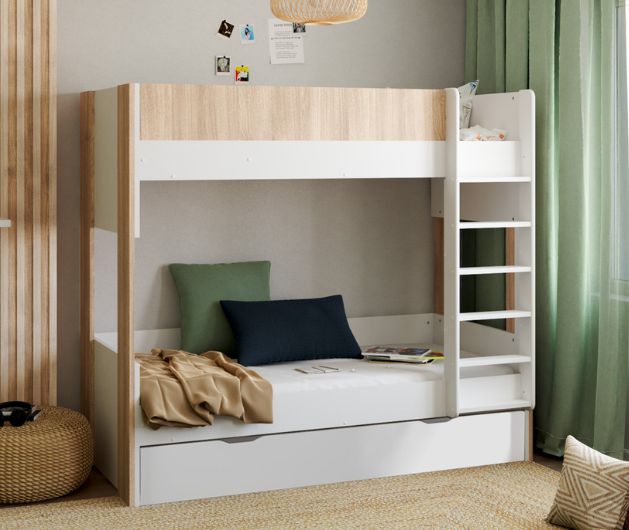
In a shared children's room, the bunk bed is a real asset on different levels. While space saving seems to be the primary advantage of this furniture, there are actually many other benefits to discover. When several children share the same room, discover why the bunk bed is the ideal solution.
What is a bunk bed?
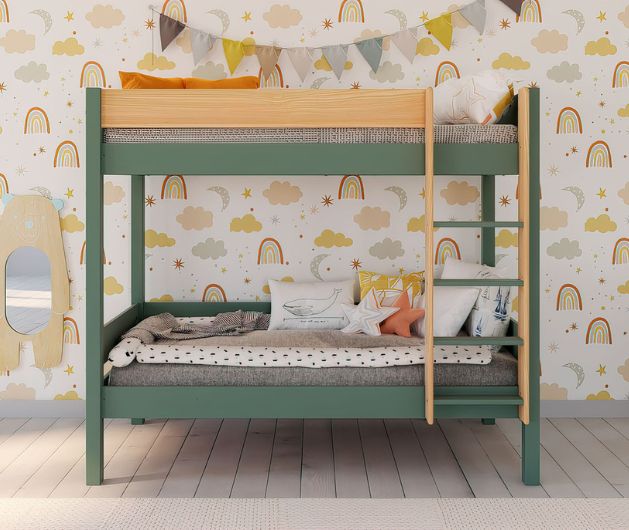
The bunk bed is a bed model most often used in a child's room. It is a piece of furniture that stacks two single beds using a specific structure. The first bed is accessible like any standard bed. The second can be accessed via a small ladder. This type of furniture is used in shared children's rooms where space might be lacking if two separate beds were installed.
Today, a large majority of furniture brands offer different models with all kinds of materials, designs, colors, etc.
Why choose a bunk bed: 5 advantages
Are you considering installing a bunk bed in your children's room, but still hesitating? Discover 5 advantages that you can only find with bunk beds.
A fun and entertaining piece of furniture for children
In the vast majority of cases, children love bunk beds. A children's bunk bed is indeed a piece of furniture that stands out from the ordinary. With its fort-like appearance for the bottom bunk and ladder access to the top, it becomes something inherently fun and playful. If your children are reluctant to go to bed, perhaps offering them a children's bunk bed could make the difference. In any case, there's no doubt that this new bed will be quickly embraced.
A real space saver
With a bunk bed, the space saved in the room is considerable. Spacious children's rooms are rare, and this becomes even more constraining when two children share the same space. Therefore, it's important to find clever and well-thought-out solutions to save space while providing a pleasant daily environment for your children. The bunk bed is one of these solutions since it only takes up the space of one bed instead of two. Thus, you gain space to extend the play area, add a desk or other furniture in your children's room.
The possibility to separate the beds later
Less known to the general public, there is also what we call a separable bunk bed. This is a bunk bed with a standard appearance, but which gives the possibility to separate the two beds. This solution is particularly relevant when room sharing is only temporary, for example. By separating the two beds, each child can furnish their room without having to make new purchases. This versatile solution can therefore be quite relevant if you wish to separate the two sleeping spaces later.
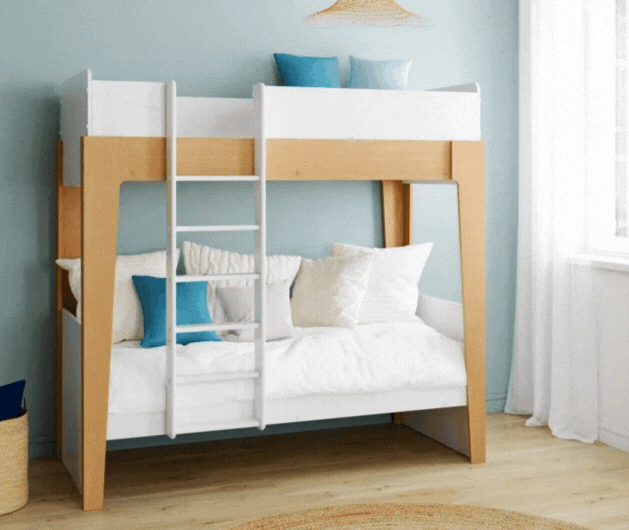
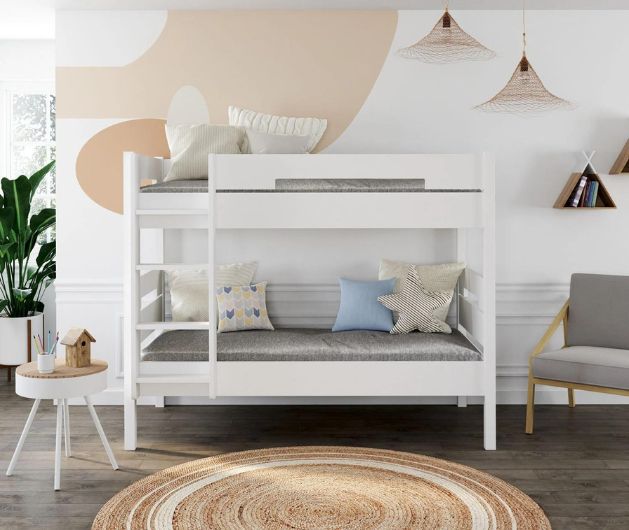
A durable and aesthetic piece of furniture
Among the different bunk beds on the market, you have the possibility to choose durable furniture with careful aesthetics. Opt for example for a white bunk bed or a wooden bunk bed. This will be the opportunity to choose a durable material with a style that's easy to match, regardless of how the decoration evolves.
Our white Milo bunk bed for example is made with ecological wood panels, solid wood, water-based paint, and is manufactured in France. You therefore have the possibility to make both an ethical and aesthetic choice for your bunk bed.
It can even accommodate 3 children
Finally, you even have the possibility to have three children sleep in the same room by choosing a triple bunk bed. The triple bunk bed has the same appearance as the classic bunk bed, but it also has an additional bed in a drawer. It thus adopts the same functionality as a trundle bed to hide the third sleeping space. Retractable, the third bed can be set up in no time to accommodate an extra child either occasionally or daily.
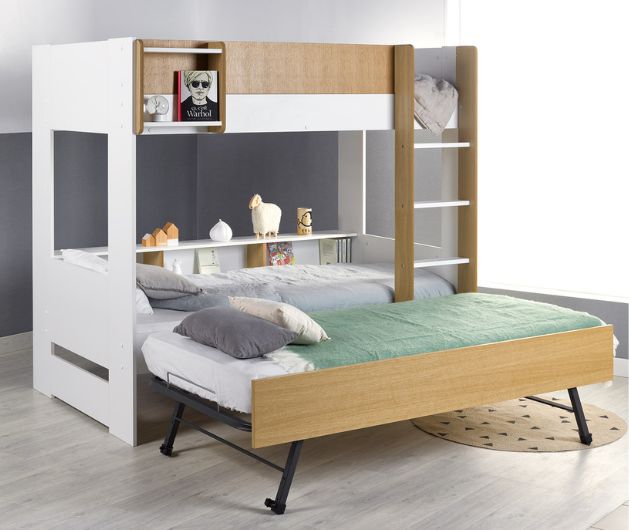
What age for sleeping in a bunk bed?
With the elevated bed comes the question of the age for sleeping in a bunk bed. Safety standards state that the top bunk should only be used from the age of 6 years old. Before this age, a child's motor skills don't allow them to climb the ladder safely. As for the bottom bunk, however, it can be used as soon as your child leaves their crib. The top bunk will therefore often be reserved for the older child.
How much weight can a bunk bed support?
Regarding the weight supported by the structure, it is generally very substantial and therefore presents no risk of breaking. Indeed, bunk beds are typically designed to support an adult's weight, so there's no risk in that regard. To know the exact maximum supported weight, check with the manufacturer of the chosen model.
However, supporting significant weight doesn't mean there's no risk of breakage. It's therefore necessary to ensure proper assembly of the chosen model, and also to follow the manufacturer's recommendations to avoid weakening the overall structure. Make sure your children understand that jumping on the bed is not allowed, for example.




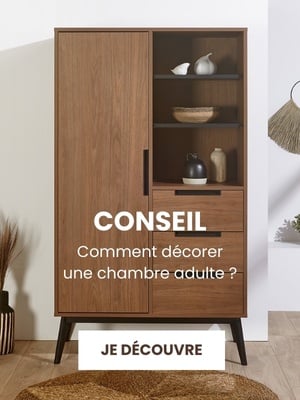






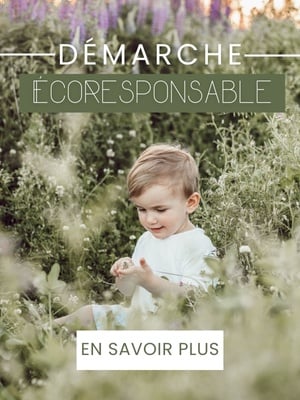

 Choosing the right baby blanket dimensions according to season and age
Choosing the right baby blanket dimensions according to season and age
 How to attach a headboard (with or without drilling): quick and effective soluti
How to attach a headboard (with or without drilling): quick and effective soluti
 Waterproof sheet or mattress protector: the best solution by age group
Waterproof sheet or mattress protector: the best solution by age group
 27 Original, Useful, and Trendy Christmas Ideas for Teens 2025
27 Original, Useful, and Trendy Christmas Ideas for Teens 2025
 Christmas Activities for Baby: Creative Ideas for Home & Daycare
Christmas Activities for Baby: Creative Ideas for Home & Daycare
